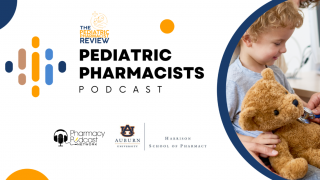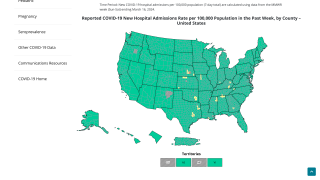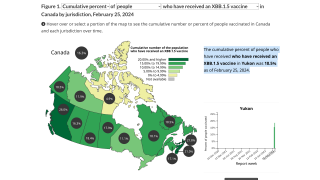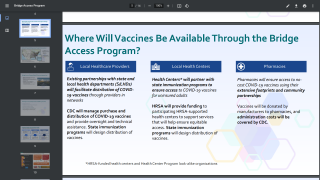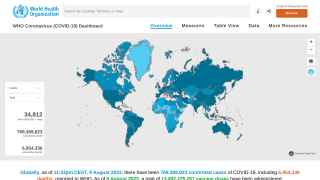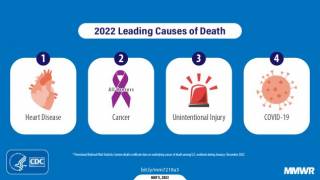Omicron BA.x Subvariants Better at Evading Most COVID-19 Therapeutics

The latest SARS-CoV-2 coronavirus Omicron subvariants known as BA.4 and BA.5 are better at eluding vaccines and most antibody treatments than previous variants, according to researchers at Columbia University Vagelos College of Physicians and Surgeons.
Subvariants BA.2.12.1, BA.4, and BA.5 are rapidly expanding worldwide, with BA.4/5 now making up more than 50% of new COVID cases in the USA.
In addition, these subvariants are thought to be even more transmissible than prior omicron subvariants, owing to several new mutations in spike proteins.
The new study was published in the peer-review journal Nature on July 5, 2022, and was led by David D. Ho, MD, director of the Aaron Diamond AIDS Research Center and the Clyde‘56 and Helen Wu Professor of Medicine at Columbia University Vagelos College of Physicians and Surgeons.
"The virus is continuing to evolve, as expected, and it is not surprising that these new, more transmissible subvariants are becoming more dominant around the world,” says Ho in a related press release.
"Understanding how currently available vaccines and antibody treatments stand up to the new subvariants is critical to developing strategies to prevent severe disease, hospitalizations, and deaths—if not infection.”
In laboratory experiments, Ho and his team studied the ability of antibodies from individuals who received at least three doses of an mRNA vaccine or got two shots and were then infected with omicron to neutralize the new subvariants.
Ho’s team did not look at individuals who had not received a booster vaccination because a previous study found that two doses provide little protection against infection by earlier omicron variants.
This study revealed that BA.2.12.1 is only modestly more resistant than BA.2 in vaccinated and boosted individuals, BA.4/5 was at least four times more resistant than its predecessor.
- Mutation at spike residue L452 found in BA.2.12.1 and BA.4/5 facilitates escape from some antibodies directed to the so-called class 2 and 3 regions of the receptor-binding domain.
- The F486V mutation found in BA.4/5 facilitates escape from specific class 1 and 2 antibodies but compromises the spike affinity for the viral receptor.
- The R493Q reversion mutation, however, restores receptor affinity and consequently the fitness of BA.4/5.
In addition, the scientists tested the ability of 19 monoclonal antibody treatments to neutralize the variants and found that only one (Bebtelovimab) of the available antibody treatments remained highly effective against both BA.2.12.1 and BA.4/5.
“Our study suggests that as these highly transmissible subvariants continue to expand around the globe, they will lead to more breakthrough infections in people vaccinated and boosted with currently available mRNA vaccines,” Ho says.
Though the current study suggests that the new variants may cause more infections in vaccinated individuals, however, the vaccines continue to provide good protection against severe disease.
“Efforts in the USA to develop new vaccine boosters aimed at BA.4/5 may improve protection against infection and severe disease,” Ho says.
“In the current environment, though, we may need to look toward developing new vaccines and treatments that can anticipate the ongoing evolution of the SARS-CoV-2 virus.”
Separately, a study recently published in The BMJ suggests that, compared with the third dose of mRNA COVID vaccine, a fourth dose improved protection against infection and severe outcomes among long-term care residents during the Omicron variant wave.
Published on July 6, 2022, this Canada-based study found the marginal effectiveness of a fourth dose (95% of vaccine recipients received Pfizer mRNA-1273 (Comirnaty) vaccine as the fourth dose) seven days or more after vaccination versus a third dose received 84 or more days previously was 19% (95% confidence interval 12% to 26%) against infection, 31% against symptomatic infection, and 40% against severe outcomes.
Additionally, the U.S. NIH OpenData portal publishes updated SARS-CoV-2 Variants & Therapeutics efficacy insights.
The study authors (all from Columbia except where noted): Qian Wang, Yicheng Guo, Sho Iketani, Manoj S. Nair, Zhiteng Li, Hiroshi Mohri, Maple Wang, Jian Yu, Anthony D. Bowen, Jennifer Y. Chang, Jayesh G. Shah, Nadia Nguyen, Zhiwei Chen (University of Hong Kong), Kathrine Meyers, Michael T. Yin, Magdalena E. Sobieszczyk, Zizhang Sheng, Yaoxing Huang, Lihong Liu, and David D. Ho.
Disclosure: David D. Ho and some of his colleagues are inventors of certain monoclonal antibodies described in the paper.
Note: ‘We are providing an unedited version of this manuscript to give early access to its findings. Before final publication, the manuscript will undergo further editing.’
Columbia University Irving Medical Center provides international leadership in basic, preclinical, and clinical research; medical and health sciences education; and patient care and is home to the largest medical research enterprise in New York City and State.
CoronavirusToday publishes fact-checked, research-based news curated for mobile readership.
Our Trust Standards: Medical Advisory Committee
- Antibody evasion by SARS-CoV-2 Omicron subvariants BA.2.12.1, BA.4, & BA.5
- Dominant omicron subvariants better at evading vaccines, antibody treatments
- Effectiveness of a fourth dose of covid-19 mRNA vaccine against the omicron variant among long term care residents in Ontario, C
- NIH: Therapeutic Activity Explorer
- SARS-COV-2 MONOCLONAL ANTIBODIES 2022


